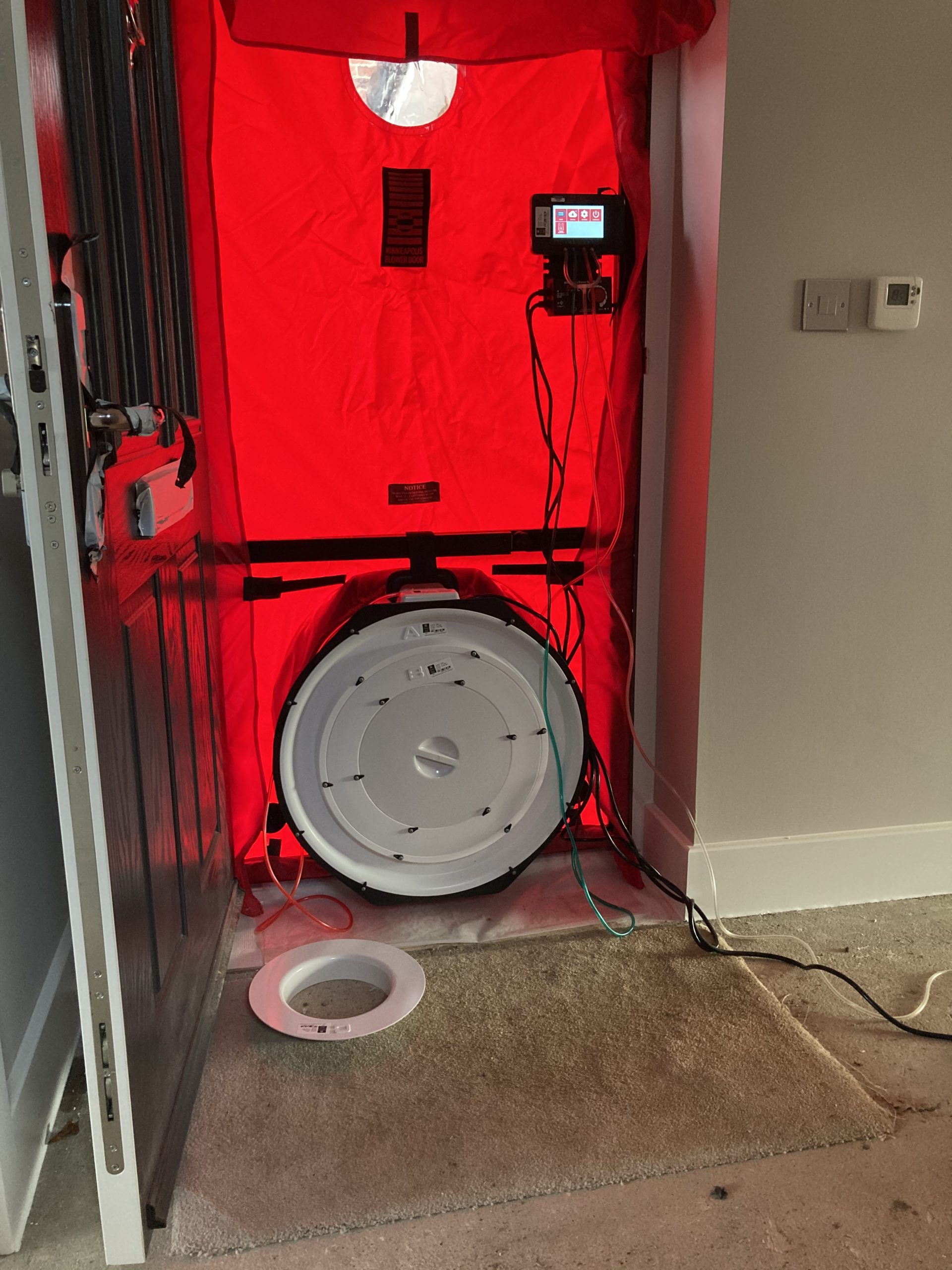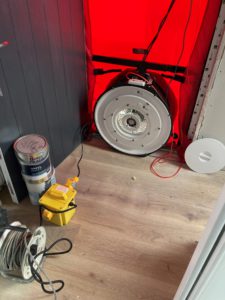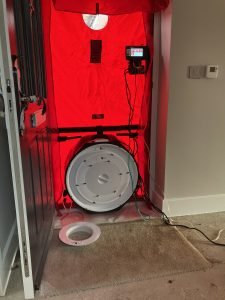Air tightness is a core part of any energy efficient dwelling design. But when is the right time to get an air tightness test undertaken? We’re sharing this – and more – in our latest blog.
Air tightness is a crucial phase of a build; it can fundamentally change the energy efficiency of a dwelling.
Also known as an air leakage test or an air pressure test, this is the manner in which your building is measured and tested for air loss through uncontrolled leaks in the building fabric. This contributes enormously to the energy performance of the building.
When is the right time to get an air tightness test? Wait until your building is pretty much good to go before getting your air tightness test. However, there is the option of getting a sample test done beforehand to pinpoint any potential problems.
Leaving such an important part of your build until last minute can feel scary; after all, if you fail you’re going to face a major disruption to the entire process. Luckily, there are things you can do to protect yourself and ensure you pass your air tightness test first time.
When should I get my air test?
Your dwelling must be essentially complete before you have your air test performed – this includes finished walls, windows fitted, skirting, lighting and switches completed, doors installed… you get the picture. You will also need your SAP score as this will set a target for the air test.
Although you need to wait to have your air test undertaken, you can employ the support of an energy advisor from the word ‘go’ to make sure your designs have been created with air tightness in mind. The right energy and sustainability consultant will be there to help you prior to the build, during and then after if you do run into any complications during the air test.
If you are targeting an extremely energy efficient building or a Passivhaus then we would recommend you undertake at least two air tests, one when the shell of the building is complete and then one at the end of the project. This way you can ensure that the building is performing as targeted and, if not, remedied prior to fit out works starting.
Do I need an air tightness test?
Any residential property – and those over a certain size (500 m2) must undergo an air tightness test. If you have a small development (of one or two properties) then one of those buildings must undergo an air test. If the properties are of different construction, then you will need to test them separately.
Typically, you will not need an air test for extensions, existing dwellings or conversion projects unless you are trying to improve the thermal performance, in which case an air testing can be a good benchmarking and diagnostic tool. Your energy consultant will be able to advise you on this.
How long does an air tightness test take?
This depends on the size of your dwelling, the number of apertures that need to be taped over and the availability of building plans. As a rule of thumb, a test should take under two hours and you should receive a test score – if successful – either the same or following day. For Passivhaus tests we are required to undertake both a pressurisation and depressurisation test, which can take slightly longer.
How much does an air pressure test cost?
Again, there are a factors that influence this answer, including:
- How many dwellings require a test
- Across how many locations these dwellings are positioned
Here at Buildpass, our air tightness test service starts at £85 for a one bedroom flat, with a minimum site visit fee of £250. It’s worth noting that a good deal of studies have suggested that a dwelling with an exceptional air tightness score has the potential to be sold at a far higher price due to the reduction in energy consumption and costs over the lifetime of the dwelling.
What’s a good air tightness score?
Broadly speaking, current building regulations stipulate that new dwellings achieve an air leakage of around 10m3/hm2 or less. That is the air leakage rate per hour, per square metre of envelope area. However, the notional building, the building that is used to benchmark building regulation, uses a target of 5m2/hrm2. We therefore recommend you target at least 5 or below to ensure the building complies with both dwelling carbon emission and fabric energy efficiency targets. If you are installing mechanical ventilation with heat recovery, then below 5 will yield great efficiency from the system.
Saying that, your air tightness target can be influenced by a number of factors. For an in-depth analysis of your target based on building and ventilation type, you can download our FREE guide – 12 steps to air tightness.
What if I fail my air test?
First of all – don’t panic! While it’s not ideal, there are simple steps you can take to fix this.
If you fail an air test, you will need to pinpoint the problems that led you there. These issues will often make themselves apparent pretty quickly, but your energy consultant can support you with finding any of the sneakier issues.
You need to address these issues and then take another test. You’ll repeat the process until you pass.
We’ve outlined some of the main areas to look out for when it comes to air leakage in our blog – 5 key areas for air tightness.




















